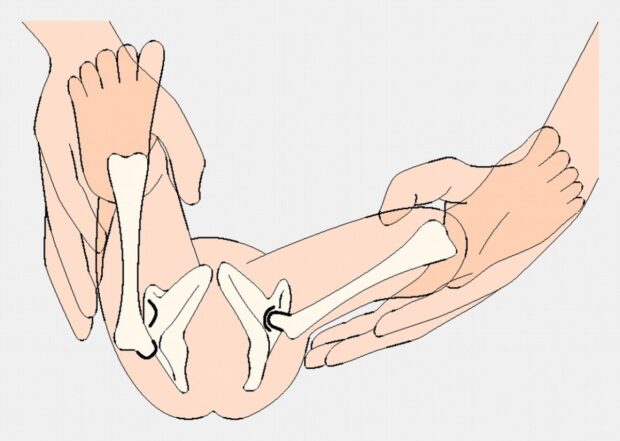The Ortolani test is a medical examination used to determine whether or not a baby has dislocated hips. It was developed in 1936 by an Italian pediatrician known as Dr. Marino Ortolani. The test is performed by gently moving the baby’s legs into different positions and checking for hip instability. If the baby’s hips are dislocated, the doctor will feel a ‘click’ when they move the legs into certain positions.
In 1948, Dr. Ortolani published his textbook on the subject, and in 1952 he released a film about the examination and treatment of hip dysplasia. The film was then translated into many languages to promote early detection and intervention for developmental dysplasia of the hip (DDH).
He wrote a monograph and 31 articles on the subject of hip dysplasia, in addition to his standard test. This early clinician-scientist made an amazing success with this procedure for infants with hip instability.
The Purpose of the Ortolani Test

The test is a way to identify a dislocated hip. This can be done by positioning the infant the same way as the Barlow maneuver – in a supine position with the hip flexed to 90º. Gently abduct the hip while lifting or pushing the femoral trochanter anteriorly from an adducted position.
The Difference Between Barlow and Ortolani Tests
The Barlow and Ortolani tests are used to determine whether or not a baby has developmental dysplasia of the hip (DDH). DDH is a condition in which the hip joint does not develop properly, often causing pain and limited mobility later in life. The Barlow test is performed by gently pushing on the baby’s thigh bone until it pops out of the hip socket. If the femoral head returns to the socket on its own, then the baby likely does not have DDH.
The Ortolani test is similar, but instead of pushing on the thigh bone, doctors use their fingers to pull back on the infant’s skin above the hips until they can feel the ball at the top of the femur pop out of the socket. If the ball slips back into the socket when released, the baby likely does not have DDH.
The Barlow test is more commonly used because it is simpler and less invasive than the Ortolani test. However, the Ortolani test is more accurate in diagnosing DDH, so doctors will usually perform both tests if there is any doubt about a baby’s diagnosis. Neither test is painful for the baby, and both are considered very reliable methods for detecting DDH.
Positive Ortolani Test

A positive Test indicates that a baby has congenital Hip Dysplasia (CHD). This test is used to diagnose and evaluate the severity of CHD. The Ortolani test is performed by gently moving the infant’s leg out to the side while applying pressure to the thigh.
A positive result is when the hip pops out and back into place. If the hip does not pop out, it is considered a negative result. A negative Ortolani test means that the hip is correct and did not dislocate.



